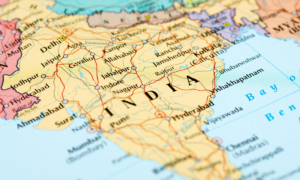The News is speaking about the How Are High Court Judges Appointed In Practice?
Recently, Speaking at a foundation-stone laying ceremony at the Madras High Court, Chief Justice N.V. Ramana 6bserved that inadequate judge strength was one of the main reasons for the delay in disposal of cases and stressed filing up all judicial vacancies and increasing the sanctioned strength of judges.
Ramana said it was necessary to reduce the caseload per judge and improve the judge-to-population ratio. (India has 21 per million, the US has 150 per million, and China has 300 per million).
The extent of vacancy
According to the Department of Justjee, the 25 High Courts have a combined sanctioned strength of 1,104 judges.
– As on April 1, 2022, the working strength of judges stood at 717.
– A Vacancy of 387 seats..! (28 % seats vacant).
The extent of vacancy – This means there are only 717 judges for a whopping 58, 92,583 cases pending adjudication. · Each judge has to dispose of 8220 cases. Hypothetically, each judge working for 365 days will need 22 years to clear the cases..!
• During the COVID-19 pandemic, 17,76,672 new cases were added to the load, roughly translating to three new cases each minute.
According to the Department of Justjce, the Allahabad High Coart tops in the number of vacancies with 66 out of the sanctioned 160 filled up. The Allahabad High Court currently has 10,28,451 cases pending adjudication. The Bombay High Court comes next with 37 vacancies for judges against a sanctioned strength of 94.
The Patna High Court has the highest vacancy rate at 49% with 26 seats vacant over a sanctioned strength of 53. Only Sikkim High Court and Tripura High Court have zero vacancies.
What if there is a delay?
• The existing backlog of cases cannot be tackled without the additional strength of judges. Without additional judges, there will be delays in the disposal of cases. Delayed justice creates disillusionment about Judiciary. The capability of the judicial system to impart justice in an efficient and effective manner will be at stake.
Appointment of Judges to the higher judiciary
Original Position – Under Article 124(2) & Article 217 (1), the Supreme court & High Court judges have to be appointed by the President of India in consultation with the CJI.
– The President was not bound by CJI’s recommendation.
Appointment of Judges:- First Judges case 1981 – S. P. Gupta v. Union Of India Supreme court ruled that the recommendations made by CJI to the president can be refused for “Cogent Reasons”.
– This verdict gave prominence to the say of “executive over judiciary”.
Appointment of Judges:- Second Judges case 1993 – Supreme Court advocates on record v. UOI – The supreme court created the collegium system of appointment of judges. – Collegium shall consist of CJI and four senior-most judges for supreme court judges appointment & 2 senior-most judges for high court judges appointment.
– The recommendation of the collegium would be binding on the executive.
Appointment of Judges
• Third judges case 1998 – Re. Supreme Court advocates on record V. Union Of India
– Supreme court formalized the collegium system giving guidelines for the appointment & transfer of SC/HC judges with a qualified veto to the collegium.
We saw the How Are High Court Judges Appointed In Practice? But what is the actual procedure for High Court Judges?
The appointment proposal is initiated by the chief justice of the concerned High Court. It is required of the Chief Justice to consult two senior-most colleagues before forwarding the recommendation. All consultations are stated in writing and sent along with the recommendations to the chief ministers of the respective states.
If the Chief Minister desires to recommend any person for the post, he forwards the name to the chief justice’s proposal, with a complete set of papers that are simultaneously sent to the Governor to avoid delay. A copy is also sent to the Chief Justice of India and the Union Minister of Law, Justice, and Company Affairs to expedite the entire process.
The Union Minister of Law, Justice, and Company Affairs considers the recommendations in the light of other reports (including intelligence reports) available to the government. The complete material is next forwarded to the Chief Justice of India for advice, who then consults two senior-most Judges of the Supreme Court to make a choice and forward the recommendation to the Union Minister of Law, Justice, and Company Affairs, within a month.
The Minister then puts up CJI’s recommendation (within three weeks), to the Prime Minister, who advises the President in the matter of appointment preferably, within another three weeks. Once the President approves it, the announcement is made and necessary notification in the Gazette of India gets issued.



























